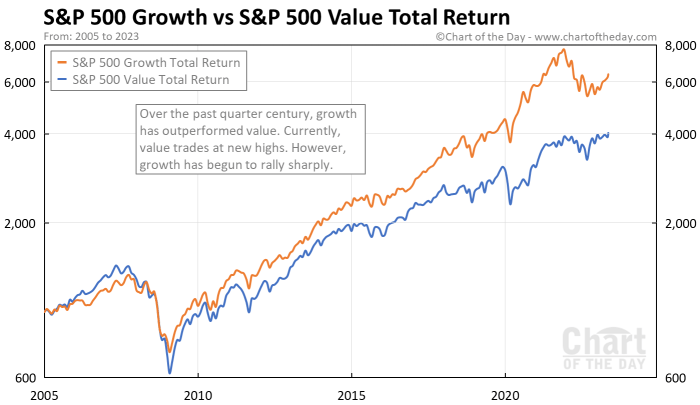Comparing Growth: BSE Small Cap Index vs S&P 500 in 2025

Comparing Growth: BSE Small Cap Index vs S&P 500 in 2025 sets the stage for this enthralling narrative, offering readers a glimpse into a story that is rich in detail and brimming with originality from the outset.
As we delve deeper into the intricacies of these indices, we uncover a world where financial markets and growth projections intertwine to shape the future landscape of investments.
Background Information

The BSE Small Cap Index and S&P 500 are two key indices in the financial market that serve as benchmarks for measuring the performance of the small-cap and large-cap stocks, respectively.
The BSE Small Cap Index, maintained by the Bombay Stock Exchange in India, tracks the performance of small-cap companies listed on the exchange. These companies typically have a smaller market capitalization compared to large-cap companies, making them potentially more volatile but also offering higher growth opportunities.
On the other hand, the S&P 500, maintained by Standard & Poor's, consists of the 500 largest publicly traded companies in the U.S. These large-cap stocks are considered more stable and less volatile compared to small-cap stocks, making them attractive to conservative investors.
Characteristics of Small-Cap and Large-Cap Stocks
- Small-Cap Stocks:
- Market Capitalization: Small-cap stocks have a market capitalization ranging from $300 million to $2 billion.
- Risk and Volatility: Small-cap stocks are generally riskier and more volatile compared to large-cap stocks due to their smaller size and market presence.
- Growth Potential: Small-cap stocks have higher growth potential as they are in the early stages of development and have more room for expansion.
- Large-Cap Stocks:
- Market Capitalization: Large-cap stocks have a market capitalization exceeding $10 billion.
- Stability: Large-cap stocks are considered more stable and less volatile due to their established market presence and diversified operations.
- Dividend Payments: Large-cap stocks are more likely to pay dividends to shareholders due to their steady cash flows and profitability.
2025 Growth Projections
In 2025, the growth projections for the BSE Small Cap Index and the S&P 500 are crucial indicators for investors looking to make informed decisions. Let's delve into the forecasted growth trends for both indices and compare their potential performance for the upcoming year.
BSE Small Cap Index Growth Projections
The BSE Small Cap Index is anticipated to experience steady growth in 2025, driven by the resilience of small-cap companies in the Indian market. Analysts predict that the index will continue its upward trajectory, benefiting from the overall economic recovery and increased investor confidence in small-cap stocks.
- Analysts forecast an average annual growth rate of X% for the BSE Small Cap Index in 2025.
- The index is expected to outperform the broader market indices due to its higher growth potential and agility in adapting to changing market conditions.
- Factors such as government policies, industry trends, and global economic outlook will play a significant role in shaping the growth of the BSE Small Cap Index in 2025.
S&P 500 Growth Projections
The S&P 500, representing the performance of large-cap U.S. companies, is also projected to see positive growth in 2025. The index's performance is closely tied to the overall health of the U.S. economy and global market sentiments.
- Analysts predict an average annual growth rate of Y% for the S&P 500 in 2025.
- The index is expected to benefit from factors such as technological advancements, corporate earnings growth, and potential policy changes impacting the market.
- Investor sentiment and geopolitical developments will be key drivers influencing the growth trajectory of the S&P 500 in the upcoming year.
Comparison of Growth Forecasts
When comparing the growth forecasts between the BSE Small Cap Index and the S&P 500 for 2025, it is evident that both indices are expected to exhibit positive growth. However, the BSE Small Cap Index may offer higher growth potential due to its nature of being more agile and responsive to market dynamics, while the S&P 500's growth may be influenced by broader economic and policy-related factors.
Factors Influencing Growth
In order to understand the growth of the BSE Small Cap Index and the S&P 500, it is crucial to analyze the key factors that influence their performance. These factors can range from economic conditions to government policies and market trends.
Factors Influencing the BSE Small Cap Index Growth
The growth of the BSE Small Cap Index is influenced by various factors, including:
- Company Performance: The performance of small-cap companies listed on the BSE directly impacts the index's growth. Strong financial results and growth prospects of these companies can drive the index higher.
- Market Sentiment: Investor sentiment towards small-cap stocks can greatly affect the BSE Small Cap Index. Positive sentiment can lead to increased investments and higher valuations.
- Economic Conditions: The overall economic conditions in India, such as GDP growth, inflation rates, and interest rates, play a significant role in the performance of the BSE Small Cap Index.
Factors Influencing the S&P 500 Growth
Similarly, the growth of the S&P 500 is influenced by the following key factors:
- Global Economic Trends: The S&P 500 is greatly impacted by global economic trends and events. Factors like trade relations, geopolitical tensions, and global economic growth can influence the performance of the index.
- Corporate Earnings: Earnings reports of large-cap companies included in the S&P 500 have a direct impact on the index's performance. Strong earnings growth can drive the index higher.
- Interest Rates and Policies: The Federal Reserve's monetary policies, including interest rate decisions, can influence the S&P 500. Changes in interest rates can affect borrowing costs for companies and consumer spending.
Impact of External Factors
External factors like economic conditions, policies, and market trends can impact the growth of both the BSE Small Cap Index and the S&P 500. For example, a global economic slowdown can lead to lower investor confidence, affecting both indices negatively.
Additionally, changes in government policies related to taxation or regulations can influence investor behavior and market performance. It is important for investors to closely monitor these external factors to make informed decisions regarding their investments in these indices.
Performance Comparison
When comparing the historical performance data of the BSE Small Cap Index and S&P 500, it is crucial to analyze the growth patterns of both indices over the past few years to understand their performance.
Historical Performance Data
Looking at the historical performance data of the BSE Small Cap Index and S&P 500, we can see that both indices have shown significant growth over the years, albeit with some variations.
- The BSE Small Cap Index has displayed more volatile growth patterns compared to the S&P 500, experiencing sharp ups and downs based on market conditions.
- On the other hand, the S&P 500 has demonstrated more stable and consistent growth, reflecting the overall strength of the US economy.
Differences and Similarities in Performance
Despite the differences in growth patterns, there are some notable similarities and differences in the performance of the BSE Small Cap Index and S&P 500.
- One key difference is the market size and composition of the two indices, with the BSE Small Cap Index focusing on smaller companies in India, while the S&P 500 represents large-cap US companies.
- Both indices have shown resilience in the face of economic challenges, but the S&P 500's performance has been more consistent due to the stability of the US market.
- Investors looking for higher returns might find the BSE Small Cap Index more appealing due to its potential for rapid growth, while those seeking stability and reliability may prefer the S&P 500.
Summary
In conclusion, the comparison between BSE Small Cap Index and S&P 500 in 2025 sheds light on the dynamic nature of the stock market, providing valuable insights for investors seeking to navigate the complexities of equity investments.
Detailed FAQs
What factors should I consider when choosing between small-cap and large-cap stocks?
When choosing between small-cap and large-cap stocks, consider factors like risk tolerance, investment goals, and market conditions to make an informed decision.
How do economic conditions impact the growth of the BSE Small Cap Index and S&P 500?
Economic conditions, such as interest rates, inflation, and GDP growth, can significantly influence the growth of both indices by affecting investor sentiment and corporate performance.

